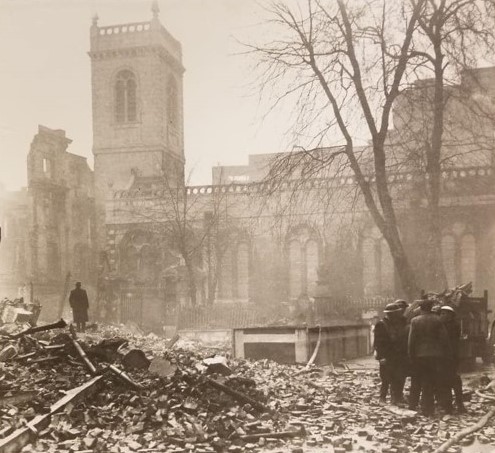Preserving the Past for the Future
On December 29, 1940, German aircraft dropped tens of thousands of incendiary bombs and parachute mines over the City of London.

The Second Great Fire of London began.
Winston Churchill's instructions were clear: at all costs, protect St. Paul's Cathedral.
Firefighters battled the blaze, their fight made difficult by the low tide and bombardment. The next morning smoke obstructed the rubble in the City, but visible through a gray veil was the unmistakable outline of St. Paul's—Christopher Wren's architectural masterpiece had been saved.
2,100 feet to the northeast, Wren's Church of St. Mary Aldermanbury suffered a different fate.
Its great gabled roof toppled. Its windows shattered. The pipe organ moaned as a result of the updrafts caused by the conflagration whistling through its pipes. When the smoke finally cleared, only the empty stone shell of the building remained.
The ruin stood in London for a quarter century before Westminster College, with consent from the Diocese and City of London, dismantled the church and moved it, stone by stone, to the College’s campus in Fulton, Missouri. It stands proudly today as the centerpiece of America's National Churchill Museum (ANCM) and is a lasting memorial to Winston Churchill and his "Sinews of Peace" address (commonly known as the "Iron Curtain" speech).
It remains, like Winston Churchill, a beacon of resilience and a powerful symbol of steadfastness in the face of adversity.
We invite you to support ANCM and its mission by becoming a member before December 31.


